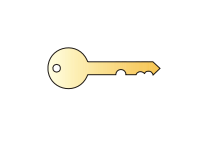
Terminology of the analysis of measurement,
The discussion of the analysis of measurement system can become confusing and misleading without an established set of terms to refer to the common statistical properties and related elements of the measurement system. This section provides a summary of such terms which are used in this manual.
Measurement is defined as “the assignment of numbers [or values] to material things to represent the relations among them with respect
to particular properties.” This definition was first given by C. Eisenhart (1963). The process of assigning the numbers is defined as the measurement process, and the value assigned is defined as the measurement.
Gage is any device used to obtain measurements; frequently used to refer specifically to the devices used on the shop floor; includes go/no-go devices (also, see Reference List: ASTM E456-96).
Measurement System is the collection of instruments or gages, standards, operations, methods, fixtures, software, personnel, environment and assumptions used to quantify a unit of measure or fix assessment to the feature characteristic being measured; the complete process used to obtain measurements.
From these definitions it follows that a measurement process may be viewed as a manufacturing process that produces numbers (data) for its output.
Viewing a measurement system this way is useful because it allows us to bring to bear all the concepts, philosophy, and tools that have already demonstrated their usefulness in the area of statistical process control.
source of Terminology of the analysis of measurement: Analysis of measurement systems
